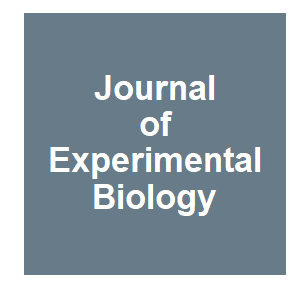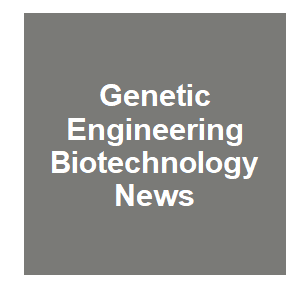
Media
A curated collection of articles from the popular press

|
The kill-switch for CRISPR that could make gene-editing saferE. Dolgin, Nature, 577:308-310. 2020.
How anti-CRISPR proteins and other molecules could bolster biosecurity and improve medical treatments. Keywords: bacteria, molecular engineering, mosquito-borne disease, Plasmodium |

|
The gene drive dilemma: We can alter entire species but should we?J. Kahn, New York Times Magazine, 2020.One early summer evening in 2018, the biologist Anthony James drove from his office at the University of California, Irvine, to the headquarters of the Creative Artists Agency, a sleek glass-and-steel high-rise in Los Angeles. There, roughly 200 writers, directors and producers ... Keywords: bacteria, molecular engineering, mosquito-borne disease, Plasmodium |

|
DNA ‘edit’ that could wipe out grey invadersLevy, A., Scottish Daily Mail, 2020.
It is the big, brash invasive species whose advance has left the native red squirrel clinging on for survival in areas where once it thrived. But the march of the grey squirrel could be halted by a 'gene drive', say researchers at the laboratory responsible for Dolly the sheep. Keywords: bacteria, molecular engineering, mosquito-borne disease, Plasmodium |

|
Red squirrels to thrive again in Britain as new plan considered to eradicate grey breedHudson, W., Express, 2020.
RED SQUIRRELS could soon be thriving in Britain again as a new plan to put an end to destructive grey squirrels is being developed. The 150 year reign of the grey squirrel could come to a halt from DNA editing to ensure all future females are born infertile. Researchers at the ... Keywords: bacteria, molecular engineering, mosquito-borne disease, Plasmodium |

|
Scientists want to hack grey squirrels to deathCutlack, C., Gizmodo, 2020.
Scottish scientists are planning to hack the DNA of the often-hated grey squirrel, in hope that selectively breeding a broken female strain could lead to their eventual eradication from the wild. It's the only way a map of Scotland is likely to turn red in the foreseeable future. Keywords: bacteria, molecular engineering, mosquito-borne disease, Plasmodium |

|
Scientists behind Dolly the sheep want to edit squirrel DNA to get rid of greys and protect reds UKBedoya, D., Inforsurhoy, 2020.
The scientists who cloned Dolly the sheep are now targeting grey squirrels in a bid to rid Britain of them altogether. Keywords: bacteria, molecular engineering, mosquito-borne disease, Plasmodium |

|
First they cloned Dolly the sheep. Now they’re targeting grey squirrelsLeake, J., The Times, 2020.
For 150 years they have wreaked havoc on Britain’s woods and wildlife, but the destructive reign of the grey squirrel could soon be over — ended by DNA editing to ensure that all future females are born infertile. Researchers at the Roslin Institute, the genetics laboratory ... Keywords: bacteria, molecular engineering, mosquito-borne disease, Plasmodium |

|
Dolly the sheep scientists hope DNA editing can wipe out grey squirrelsMcLaughlin, M., The Scotsman, 2020.
They have been poisoned, shot at, and stumbled into traps laid by those who regard them as a ruinous blight on the country’s woodland and wildlife. But now, the grey squirrel is facing arguably its biggest threat yet, with plans to harness the cutting edge of genetic science ... Keywords: bacteria, molecular engineering, mosquito-borne disease, Plasmodium |

|
A selfish genetic element linked to increased lifespan impacts metabolism in female house miceP. C. Lopes and A. K. Lindholm, Journal of Experimental Biology, 22:4. 2020.
Gene drive systems can lead to the evolution of traits that further enhance the transmission of the driving element. In gene drive, one allele is transmitted to offspring at a higher frequency than the homologous allele. This has a range of consequences, which generally include a ... Keywords: bacteria, molecular engineering, mosquito-borne disease, Plasmodium |

|
Senegal celebrates first victory against tsetse fly eradicationFAO, FAO, 2020.
A campaign against the tsetse fly, a pest that transmits a disease that devastates livestock, in the Niayes area near the capital Dakar started four years ago paving the way for complete eradication of this pest. “I have not seen a single tsetse fly for a year now,” said ... Keywords: bacteria, molecular engineering, mosquito-borne disease, Plasmodium |

|
These are the 5 most dystopian technologies of 2020 and beyondM. Sullivan, FastCompany, 2019.
Tech is always both good and bad. But we live in a time when everything gets weaponized—ideas, images, ancient texts, biases, and even people. And technology provides the tools to do it easier, faster, and with less resources. Keywords: bacteria, molecular engineering, mosquito-borne disease, Plasmodium |

|
CRISPR-based gene-drives: from eukaryotes to prokaryotesNizet, V., Bioengineering Community, 2019.
Active genetics technology greatly biases transmission of genetic traits, bypassing traditional constraints of Mendelian inheritance and spreading rapidly through wild populations (1). Molecularly defined gene drive constructs in Saccharomyces cerevisiae were copied at ... Keywords: bacteria, molecular engineering, mosquito-borne disease, Plasmodium |

|
New CRISPR system efficiently battles antibiotic resistanceBlack, Samantha, The Science Advisory Board, 2019.
Researchers from the University of California San Diego have developed a brand new CRISPR-based gene-drive system that dramatically increases the efficiency of inactivation of genes responsible for antibiotic resistance. The new system is detailed on December 16 in Nature ... Keywords: bacteria, molecular engineering, mosquito-borne disease, Plasmodium |

|
Antibiotic resistance hoops countered by gene drive feedback loopsGEN, Genetic Engineering & Biotechnology News, 2019.
Where a gene drive that cuts and destroys plasmids may fail, a gene drive that cuts, pastes, and copies plasmids may succeed. The “where,” in this case, is an antibiotic-resistant bacterium that carries multiple copies of an antibiotic-resistance gene. That is, the target ... Keywords: bacteria, molecular engineering, mosquito-borne disease, Plasmodium |

|
Tackling antibiotic resistance head-on with CRISPRThomas, L., News Medical Life Sciences, 2019.
With modern advances in genetic engineering occurring almost every day, the latest discovery concerns antibiotic resistance. Using the powerful gene editor CRISPR, scientists reported the development of a gene-drive system that is 100 times as efficient as other current systems ... Keywords: bacteria, molecular engineering, mosquito-borne disease, Plasmodium |

|
Gene Drives: Assessing the benefits & risksCreighton, J., Future of Life, 2019.
Most people seem to understand that malaria is a pressing problem, one that continues to menace a number of areas around the world. However, most would likely be shocked to learn the true scale of the tragedy. To illustrate this point, in 2017, more than 200 million people were ... Keywords: bacteria, molecular engineering, mosquito-borne disease, Plasmodium |

|
Out for blood: the fight against the planet’s deadliest creatureMatsangou, E., The New Economy, 2019.
The deadliest creature on the planet is not a great white shark, a starved lion, an enraged hippopotamus or a poisonous snake – it’s the minute mosquito. According to the World Health Organisation (WHO), mosquitoes kill millions of people each year, with malaria – the most ... Keywords: bacteria, molecular engineering, mosquito-borne disease, Plasmodium |

|
Malaysia Wolbachia trials: Battling dengue and other mosquito-borne viruses, 2019.Keywords: bacteria, molecular engineering, mosquito-borne disease, Plasmodium |

|
This gene technology could change the world. Its maker isn’t sure it shouldLove, S., Vice, 2019.
Kevin Esvelt came up with a way to use gene editing for gene drives, a technology that could change the ecological fate of the whole world. How does one scientist deal with the potential ramifications of his own creation? There’s a chilling calculation that’s simple enough ... Keywords: bacteria, molecular engineering, mosquito-borne disease, Plasmodium |

|
Wiping out the daughters: Burkina Faso’s controversial mosquito experimentBoersma, H. and J. Bastmeijer, The Guardian, 2019.
A radical experiment to genetically modify a strain of mosquito in order to stop them breeding malaria-carrying daughters is one of the latest efforts to tackle the deadly scourge of malaria Keywords: bacteria, molecular engineering, mosquito-borne disease, Plasmodium |

Contact
David O’Brochta
Foundation for the
National Institutes of Health
geneconvenevi@fnih.org
RSS

